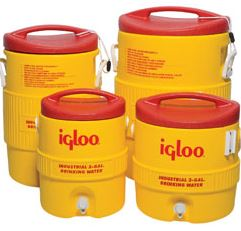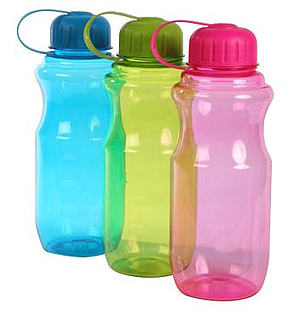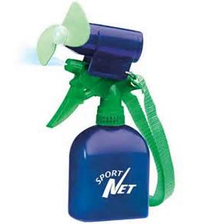Here in the late Spring early summer is a great time to start thinking about what may happen if you have a dry summer. I wanted to bring you an article that my friend Mr. Don Schwerzler wrote a while ago about rainwater harvesting. If you own or even rent office space or are just working out of your home, starting a rainwater harvesting plan could be a benefit to your business. Water is the biggest commodity your business uses, why not try ways to get it cheaper?
"Rainwater harvesting makes a great deal of sense as a strategy for many family businesses," suggested leading family business expert Don Schwerzler at a recent family business workshop - discussing strategies that can help family business entrepreneurs as they go about Future Proofing Your Family Business
Schwerzler began studying and advising family business entrepreneurs in 1967 and is the founder of the Family Business Institute and the web organization Family Business Experts both of which are headquartered in Atlanta GA.
The rainwater harvesting presentation was conducted by Bob Drew, a nationally recognized expert in rainwater harvesting and a member of the environmental consulting team at the Family Business Institute. A process design engineer with a Chemical Engineering degree from the University of Wisconsin and a MBA from UCLA, Drew serves as chairman of Southeast Rainwater Harvesting Systems Association (SERHSA) and a board member of the American Rainwater Catchment Systems Association (ARCSA).
“We have passed the point when we can take any available water source for granted”, said Drew. “Ignoring rainwater harvesting as a readily available means to increase water supply, stimulate and protect our economy, provide environmental and financial benefits and to preserve our quality of life makes no sense.”
The eastern U.S. remains largely unfamiliar with rainwater harvesting because abundant water resources have always been more than sufficient for residential and commercial use, with reserves to spare. Dramatic population increases are rapidly outstripping our resources.
In concept, rainwater harvesting is as simple as the popular rain barrel used by many gardeners to maintain their gardens and landscapes.
But rainwater management systems can be far more sophisticated.Rainwater management systems start by collecting rainwater from roofs and flat surfaces and are adaptable to any size or type of structure, from a residential house to an office building or a retail shopping complex.
A Crisis in the Making
Atlanta GA is an excellent example of a major city facing a water supply crisis.
After a summer of drought conditions in Middle and South Georgia, water levels in Lake Lanier are now close to the record lows established in the drought of 2007-2008.
USA Today reported on Nov 11th that drought conditions throughout the South and Midwest have inflicted more than $10 billion in economic losses to the U.S. economy, a number projected to rise if dry conditions persist through the winter months as expected
State and regional business leaders are appropriately alarmed about the looming gap between demand for water in metro Atlanta and available supply. That dreaded condition could reach crisis proportions as soon as five years from now.
Intensive efforts are under way to identify and establish new reservoirs to provide long-term reserves that will support metro Atlanta’s continued growth and prosperity.
In addition to those efforts, proven policies and techniques already established by regions long accustomed to drought – such as New Mexico and Arizona as well as the nation of Australia – show us that more can be done in the interim.
In those places and many others, rainwater management is widely practiced and embraced as a means of making the most of every precious drop of available water.
So, rainwater harvesting’s time has come in Georgia, offering significant benefits that every policymaker should understand as they develop water conservation policies and practices. Rainwater harvesting could provide key elements for a state water policy that supports business development (jobs) and quality of life.
Water Facts and Figures
More than half of all Georgia’s municipal water use, especially in the summer, goes to irrigation! Rainwater management could have a huge impact on water supply.
Consider this – research reviewed by a team of academic experts at Georgia Tech indicates that a relatively modest 10 percent adoption of rainwater harvesting techniques from metro Atlanta rooftops could save an average of 27 million gallons of water per day within five years.
“This is an achievable goal with widespread public education and reasonable encouragement from state and regional leadership. Adoption rates in places where water supply was in crisis or aggressive policies were enacted have been much higher and could be possible here,” noted Drew.
The best part of all is that this goal can be reached primarily through private investment that produces practical benefits and measurable returns. Those returns include savings on water bills which are higher in Atlanta per 100 cubic feet than any other city in the nation, a significant reduction of destructive storm water runoff and preservation of landscaping investments during drought conditions.
According to Drew, “While rainwater usage varies by state, Georgia law allows rainwater use for more than lawn and garden irrigation and filling swimming pools.
Under specific plumbing guidelines established by the Georgia Department of Community Affairs, rainwater also can be employed for toilet flushing and laundry use for individual homes as well as for commercial businesses, office buildings, warehouses, schools, hospitals, senior residence centers, restaurants and apartment/condo complexes.
Metro Atlanta and the state of Georgia would reap meaningful rewards from rainwater harvesting, too. “Rainwater harvesting can increase current water supply and can extend the capacity of existing water supplies while new reservoirs are being sited and built, a process that takes 10 to 15 years at best,” observed Drew.
As a public policy, rainwater harvesting promotes economic development. In addition to system designers, suppliers and installers, the industry creates jobs for many Georgians hard-hit by the recent economic downturn such as plumbers, electricians and landscapers. It protects the region’s economic climate, which stands to lose as much as $39 billion annually if demand for water outstrips supply as predicted, according to the Metro Atlanta Chamber.
For family business entrepreneurs, rainwater harvesting provides an immediate, tangible response to an urgent problem without significant changes in state law or time-consuming regulatory requirements.
Stormwater ManagementObservations from Landscape Architect Olivia Mickalonis
One of the major components within the field of landscape architecture is stormwater management. Before any land development occurs, a landscape architect must study the contours of the land and its watershed. Where will the water flow when the land and its natural water pathways are disturbed?
It is imperative, therefore, to design for heavy rain events, as they can be very destructive. Torrents of water cause land erosion, pollution, stream scouring and sedimentation build-up, and flooding, among other things. Measures to channel, retain, detain, decelerate, and capture stormwater must be considered.
Recycling stormwater is a sustainable measure that needs to be practiced more often. It is an old technique that has been resurrected in recent years and is now in vogue. Rainwater harvesting saves money and water use. It simply makes sense to capture rain and use it for non-potable uses or made potable with additional filtering.
"In the building industry, the addition of a water harvesting system will earn a project LEED (Leadership in Energy and Environmental Design) points," suggests Mickalonis. "I was first introduced to rainwater harvesting while I was a student in the Master of Landscape Architecture program at the University of Georgia."
"Presently, as a practicing landscape architect, rainwater harvesting is a viable, sustainable system that I often put in my designs. It is an effective tool for mitigating stormwater, saving money and using water wisely."
For more information on how your family business can benefit from rainwater harvesting, go to their ASK THE EXPERT form to contact their family business rainwater management expert.

 Before cleaning.
Before cleaning.  are a good investment for your employees. Every worker should have there own water bottle that they can fill from the cooler. Remember they should be consuming at least 8-12 oz of water per hour while working outside.
are a good investment for your employees. Every worker should have there own water bottle that they can fill from the cooler. Remember they should be consuming at least 8-12 oz of water per hour while working outside.
